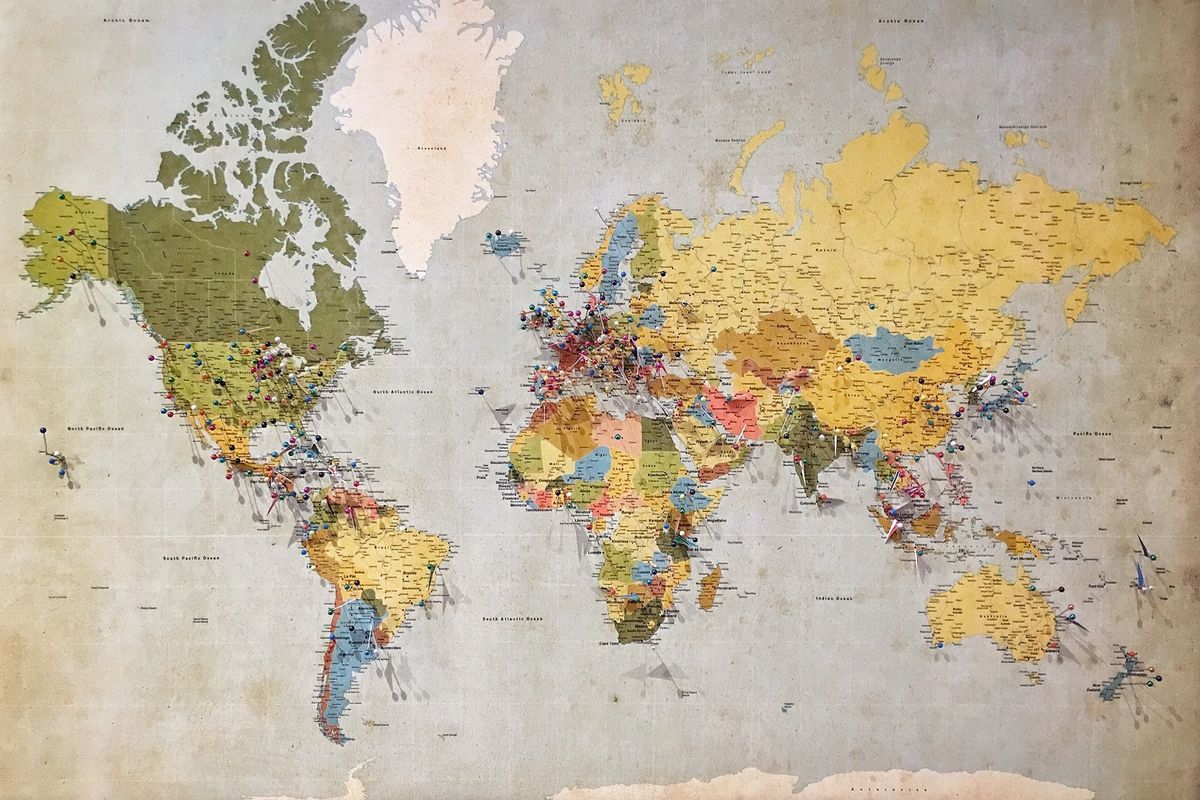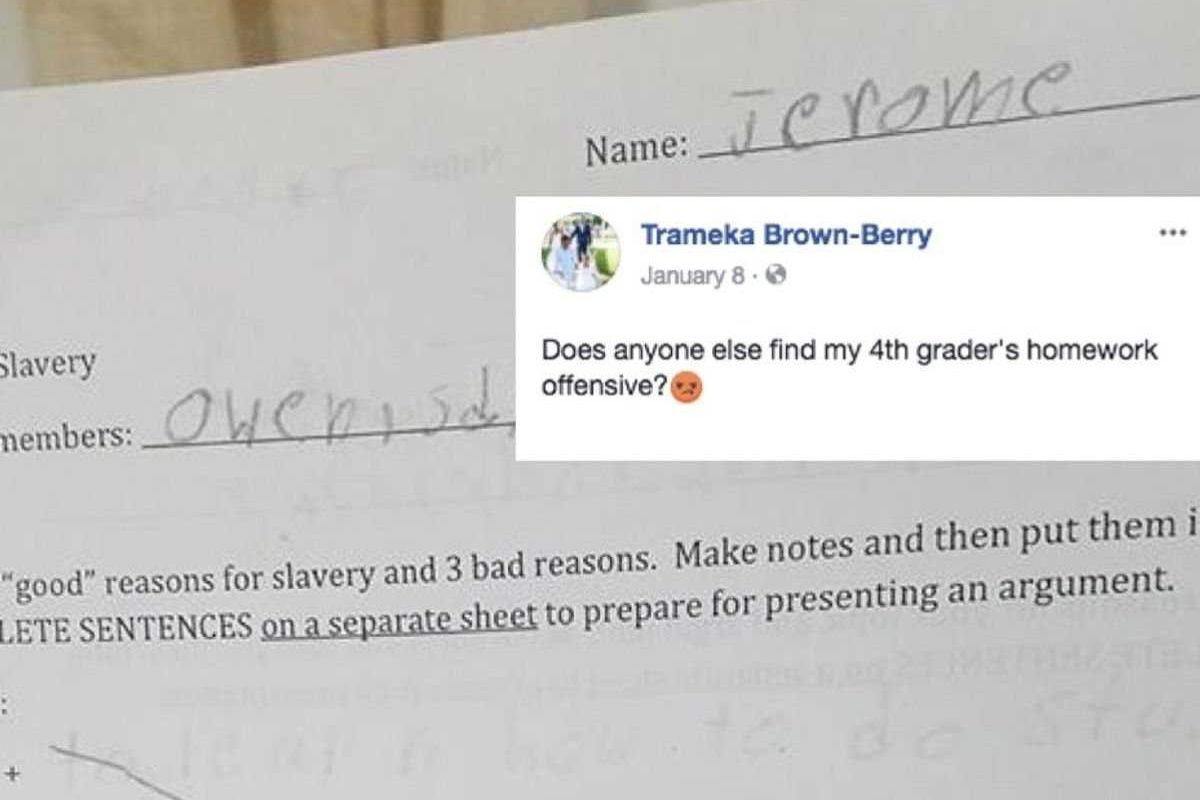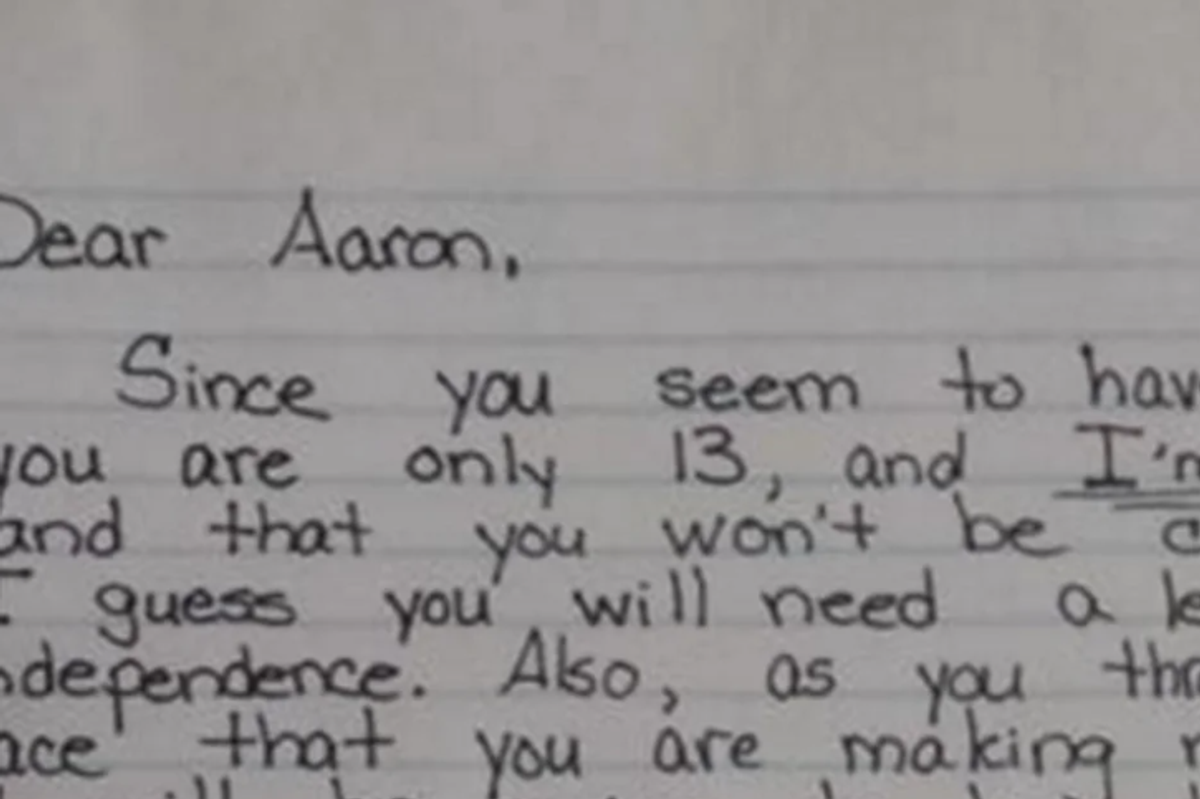Why is North at the top of a map? Silly video explains how this wasn't always the case.
YouTube's "Map Men" know how to make learning fun.

How did North get to be "up"?
When asked to point to North on a map, we point toward the top. Odds are, when you think of the word, you even associate it with “up.” (Unless, of course, you’re a “Game of Thrones” fan, then you might picture a fictional medieval family with very cool dogs and very, very bad luck.)
But why is North always “up”? Has it always been this way? If not, what was “up” before North? Does any of this matter in a digital age where directions are oriented in an instant?
These questions and more are answered by Jay Foreman and Mark Cooper-Jones, two comedians with a passion for geography who host a YouTube series called "Map Men."Being Brits, the Map Men tend to cover English topics like explaining “Why East London doesn’t have any bridges” or “What went wrong with the Tube Map.” But their latest video goes into more universal territory, breaking down why nearly every map in the world has North on the top.
Though cartographers have experimented with drawing maps that have words written in multiple directions, they weren’t very user-friendly, and therefore never made it to the mainstream. So, generally speaking, all maps need a top and bottom. That we have agreed on.

Yeah…that's not confusing at all…
Jay Foreman/Youtube
However, earlier cultures would certainly disagree that North belongs on a map’s top. That spot, in their mind, belonged to East, since it produced light, daytime, and all things symbolizing happiness. North, incidentally, symbolized darkness and evil. So, with this 90-degree change of perception in mind, an ancient map would actually have North as East, West as South, South as East and North as West. Are you dizzy yet?
This was how most European maps would have looked well into the 15th century. Although no maps survived from this time period, there are plenty of linguistic clues to prove their existence, such as words in Sanskrit meaning both “South” and “to the right,” for instance.
Going back even further, the ancient Egyptians had South at the top of the map. Considering that so much of Egyptian culture is connected to the sun, one would think they would have the direction that brings the sun every morning on the top of their maps. But as Foreman explains, they oriented their map to the apparent source of the Nile River. The Egyptian might have been ceremonious, but they were also quite practical.

These guys are hilarious.
Jay Foreman/Youtube
So, how did the North rise up?
Ironically it happened as Eurpoeans were heading West. During The Age of Exploration, explorers began incorporating the use of compasses, which are magnetized toward Earth’s poles, to improve their navigation. The Chinese inventors who created the compass originally decided that the needle pointed toward the South. However, Europeans had already been using the North Star in their navigation for years, and were inclined to keep doing so once they got their hands on the tool.
This innovation helped Europeans spread several Western ideologies, including a North-favoring map, throughout the entire globe. And here we are.
Nowadays, thanks to technology, most digital maps we interact with on a regular basis show whichever direction we are facing as “up,” also making this whole where-does-North-point story a moot one. Except there are still subtle, yet negative ways this might be influencing our world view, since humans naturally read things that are at the top as being superior to things at the bottom.
Going back to “Game of Thrones,” the Starks of the North = good guys. The Lannister of the South = bad guys. Just sayin’.
These are only the bullet points of what Foreman and Cooper-Jones covered, and it doesn't begin to embody their incredible wit and hilarious delivery. Watch them do their thing below:
There was one correction that viewers wanted to make. At one point, Cooper-Jones jokes that even J.R.R. Tolkien didn’t fathom a different orientation while creating the fictional map of Middle Earth for his “Lord of the Rings” trilogy, just to illustrate how deeply ingrained the idea is in our collective psyche.
However, one impressive LOTR fan noted that Tolkien DID, in fact, get creative with orientation, writing, “Dwarves put East up on their maps,” and “the Elvish words for ‘north’ and ‘south’ are related to the words for ‘right’ and ‘left’ respectively,” which “strongly implies that Elves and other peoples influenced by them usually drew maps with West upwards.” Proving yet again how in-depth Tolkien’s knowledge is.
It’s interesting to think about how closely linked geography and psychology are. Even something that appears to be a scientific fact, like “North is up,” is really more of a reflection of the times. It’s even more interesting to think about how concepts like these might change along with our own paradigms over time.
- A wildly fascinating map captured our top Google searches for each day of 2021 ›
- Woodworker mesmerizes millions by crafting a US map out of each state's official tree ›
- Weatherman is overcome with contagious joy after learning his map has a touchscreen ›
- Woman's rant about 'pirate' directions is going viral - Upworthy ›




 Family moving into a new home.
Family moving into a new home.  Driving Road Trip GIF by Rosen Hotels & Resorts
Driving Road Trip GIF by Rosen Hotels & Resorts 
 Baby boomers are a fascinating and endearing group.
Baby boomers are a fascinating and endearing group.  An average boomer's basement. Photo by
An average boomer's basement. Photo by  They love to scare their adult children with dramatic texts.
They love to scare their adult children with dramatic texts.  Boomers love to talk about random people who have died, and large-scale tragedies.
Boomers love to talk about random people who have died, and large-scale tragedies.  Boomers love staying at home for no good reason.
Boomers love staying at home for no good reason.  If it can't be held in their hand, they don't trust it.
If it can't be held in their hand, they don't trust it.  They'll keep food for way, way too long.
They'll keep food for way, way too long.  They still hold onto outdated gender stereotypes. Photo by
They still hold onto outdated gender stereotypes. Photo by  This is the generation that invented TV as background noise.
This is the generation that invented TV as background noise.  They love intensely tracking a thunderstorm via The Weather Channel
They love intensely tracking a thunderstorm via The Weather Channel 
 "
"
 Teaching teenagers about real-life consequences isn't easy. Photo by
Teaching teenagers about real-life consequences isn't easy. Photo by  Kids need to be reminded, sometimes, of how much they still depend on mom. Photo by
Kids need to be reminded, sometimes, of how much they still depend on mom. Photo by